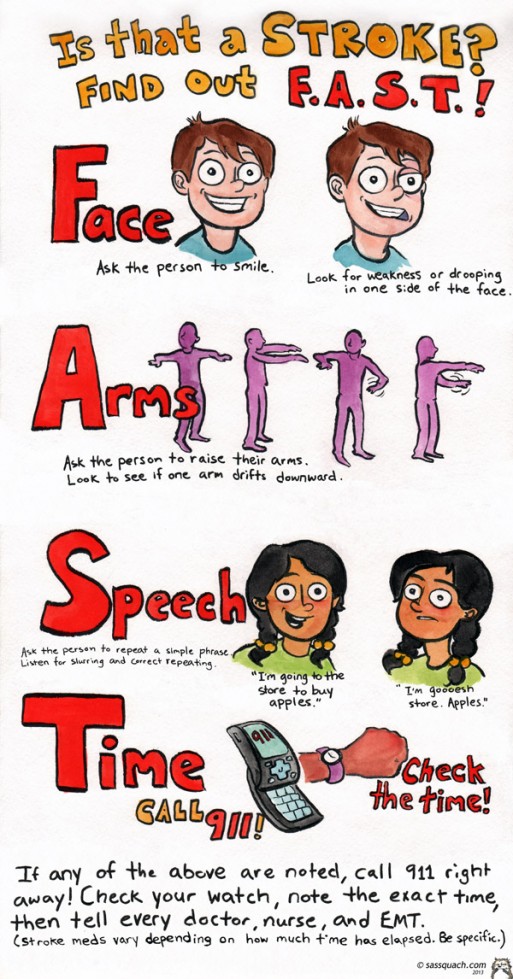Do you know this acronym to help you detect the signs of a stroke?
Face: Does the face look uneven?
Arms: Does one arm drift down?
Speech: Does their speech sound slurred or strange?
Time: If you detect any of the above signs, note the time and call 911 (or your country’s local emergency number).
Take this creative reminder from local Bay Area artist Ashley Perryman Quach:
The simple acronym exists not only as a basic reminder of the symptoms to look for if you think someone is having a stroke, but also as a call to action. A stroke, as St. Luke’s Neuroscience Center explains, “is like a brain attack” and you have to act fast to get a person to the hospital to receive care.
If you need a little added reminder, you can print this poster from St. Luke’s. Hang it on your refrigerator or your bathroom mirror — somewhere you’ll see it often and can find it easily if you need it.
If you worry that you or a loved one may be at risk of having a stroke in the future, go through this Stroke Risk Scorecard from the National Stroke Association to measure your risk factors for a stroke. Consider what changes you may need to make to your diet or exercise routine to reduce your risk or maintain a low risk for a stroke.
To reduce your risk of a stroke, NSA recommends:
1. Know your blood pressure.
2. Find out whether you have atrial fibrillation (irregular or rapid heart rate).
3. If you smoke, stop.
4. Find out if you have high cholesterol.
5. If diabetic, follow recommendations to control your diabetes.
6. Include exercise in your daily routine.
7. Eat a lower-sodium (salt), lower-fat diet.
If you are facing a sudden loss after a stroke, consider our After Death resources. If someone you know is hospitalized after a stroke, know their healthcare rights.
Have you had to care for someone having a stroke? What additional advice can you offer?

 FAST Stroke Detection: Resources to Help You Be Prepared
FAST Stroke Detection: Resources to Help You Be Prepared



 “Hand to Earth” by Andy Goldsworthy
“Hand to Earth” by Andy Goldsworthy

 Caring for a Dying Loved One? Be Gentle With Yourself.
Caring for a Dying Loved One? Be Gentle With Yourself.














